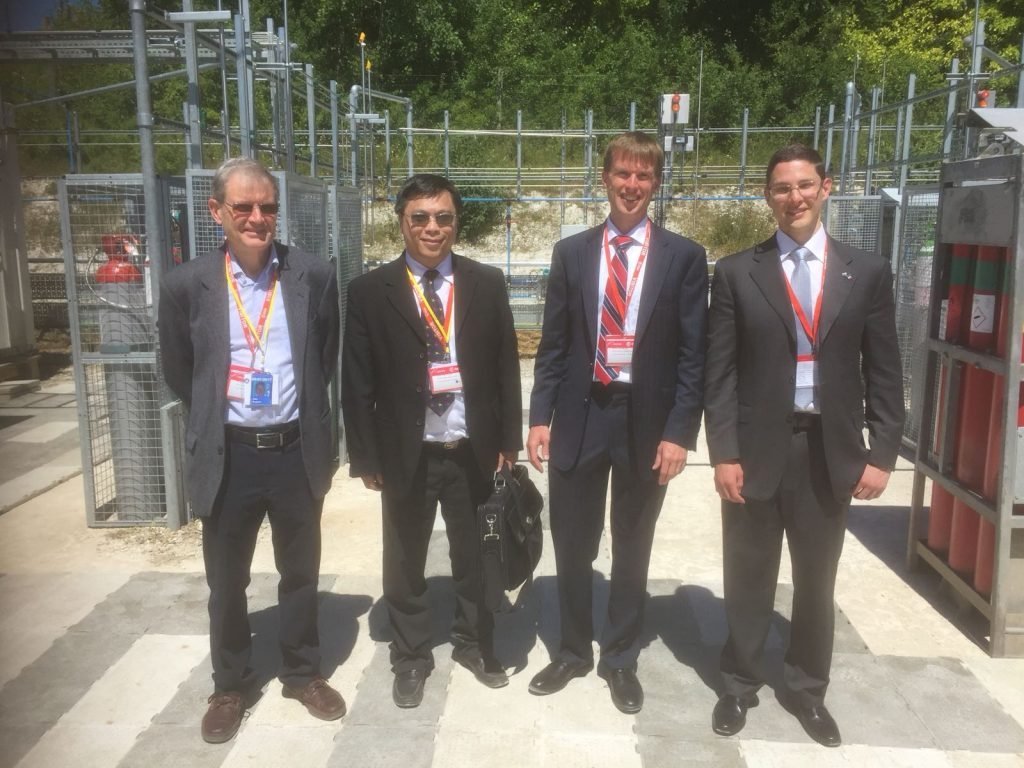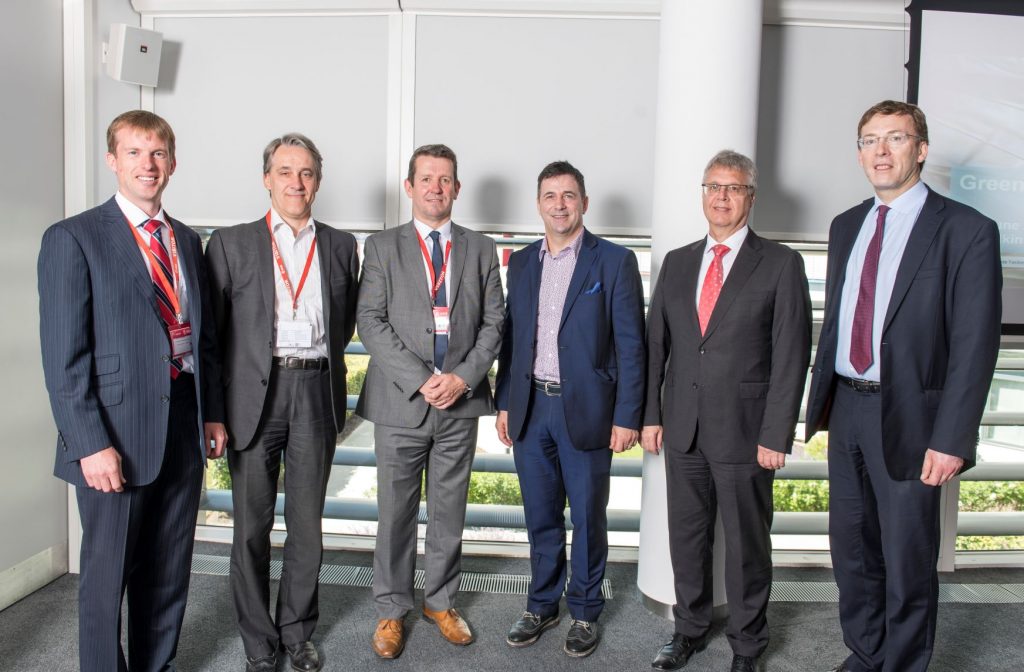World-first Green Ammonia power demonstrator
Cardiff University researchers investigate ammonia as a potential energy storage solution
FLEXIS researchers are piloting a new integrated renewable power-to-power system demonstrator that uses ammonia as an intermediate energy storage medium generated from wind power via the well-established Haber-Bosch process.
The £1.5m proof-of-concept demonstrator facility – the first of its kind – was opened in Rutherford Appleton Laboratories (Harwell), Oxfordshire. It will test the next-generation technology with a view to creating brand new sustainable systems which generate and use power when required, whilst efficiently storing energy in the form of ammonia when the demand for or price of electricity is low. The system aims to address the well-known intermittency problems inherent in renewable power generation such as wind and solar power.
The project includes researchers from FLEXIS – a £24 million EU Regional Development Fund (ERDF) project designed to grow the energy systems research capacity in Wales based on world-leading research across Welsh Universities. FLEXIS also aims to demonstrate novel energy systems and concepts to enhance their commercial viability.
The Cardiff researchers, based within Cardiff’s Gas Turbine Research Centre (GTRC), are working alongside Siemens, Oxford University, the Science and Technology Facilities Council as part of an Innovate UK project to develop the technology.

From left to right: Dr Allan Ruddell, STFC; Professor Edman Tsang, Oxford University; Dr Ian Wilkinson, Siemens; Dr Agustin Valera-Medina, Cardiff University
Dr Agustin Valera-Medina, Principal Investigator and Senior Lecturer in Cardiff University’s School of Engineering said: “The proof-of-concept facility at Harwell will test whether ammonia could provide a practical, next-generation flexible system for energy storage, transportation and power generation.
“It turns electricity, water and air into ammonia and stores it in a tank, before later combusting it in a bespoke engine to generate electricity, feed back into the grid, or sell as a fuel, all without producing any carbon emissions.”
Energy can be released from ammonia either in the traditional way by combustion in an internal combustion or gas turbine engine, or by ‘cracking’ it back into nitrogen and hydrogen and using the hydrogen in a fuel cell – to power electric vehicles, for example.
Ammonia can be used as a fuel for power generation, delivering electricity at times when renewable energy is not available, such as on calm days or at night.
Unlike hydrogen, which has long been touted as a potential green fuel of the future but has hit stumbling blocks in terms of its storage and distribution, ammonia offers relatively high energy density, while also having a well- established transport network. Dr Valera-Medina emphasises that ammonia should not be regarded as a competitor to the hydrogen economy, but as an enabler.
As part of the project, Cardiff University’s contributions have supported extensive studies on health and safety across all different components and work packages, with leadership on the development and testing of internal combustion engines fuelled by ammonia/hydrogen blends.
Professor Phil Bowen, Director of GTRC at Port Talbot, and co-Director of Cardiff’s Energy Systems University Research Institute (ESURI) said: “It is claimed that half the world’s population would not be here today without the Nobel Prize winning breakthrough in mass production of ammonia – and its use as a fertiliser – via the Haber-Bosch process in the early 20th Century. Today, a century on, GTRC is proud to have contributed with partners Siemens, Oxford and STFC to the delivery of this world-first demonstrator using this remarkable chemical but this time as an energy vector to contribute to alleviating another global challenge.”

From left to right: Ian Wilkinson, Programme Manager, Siemens Corporate Technology; Nick Eyre, Director, Oxford University Energy Research Institute; Phil Bowen, co-Director, Cardiff University, Energy Systems Research Institute; Juergen Maier. Chief Executive Officer, Siemens UK; Karl-Josef Kuhn, Head of Technology (Power-to-X & Storage), Siemens Corporate Technology; Tim Bestwick, Executive Director for Business & Innovation, Science and Technology Facilities Council
The Harwell demonstrator opened on 26 June, and was funded with £500,000 by Siemens and £1m from government innovation agency Innovate UK.
Ian Wilkinson, Programme Manager, Siemens Corporate Technologies, said: “Meeting our decarbonisation targets is a big challenge for society today and demands a range of complementary solutions, including a variety of storage technologies. Carbon-free chemical energy storage – including Green Ammonia – has the potential to work alongside other storage methods such as batteries, and help increase the penetration of renewable power into our energy systems.
“This demonstrator, and the work we’ve done with colleagues from academia, shows that Green Ammonia is a viable option and can help reduce carbon emissions from existing industrial processes as well as provide a means for transporting and storing renewable energy in bulk.”
The Cardiff, Oxford and Siemens consortium are currently contributing to a Royal Society Policy Briefing regarding Ammonia for Power, due for publication in September, 2018.


